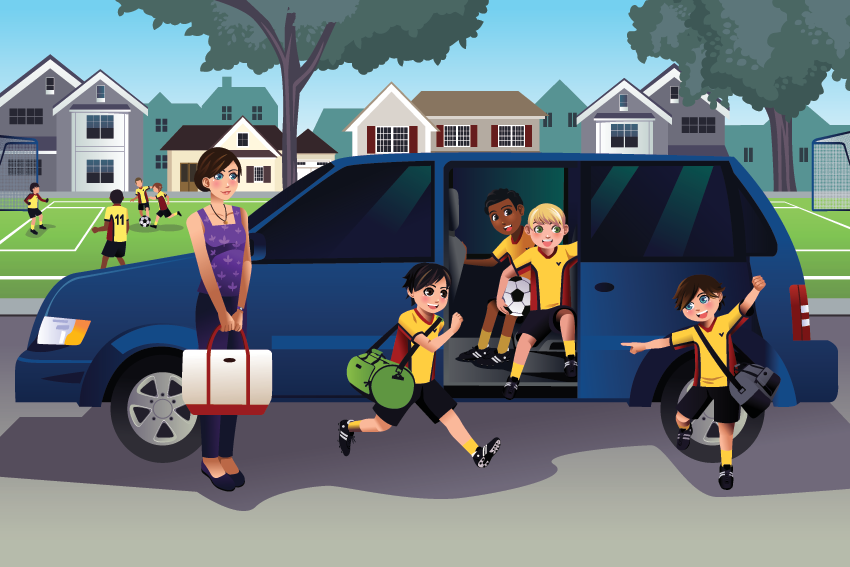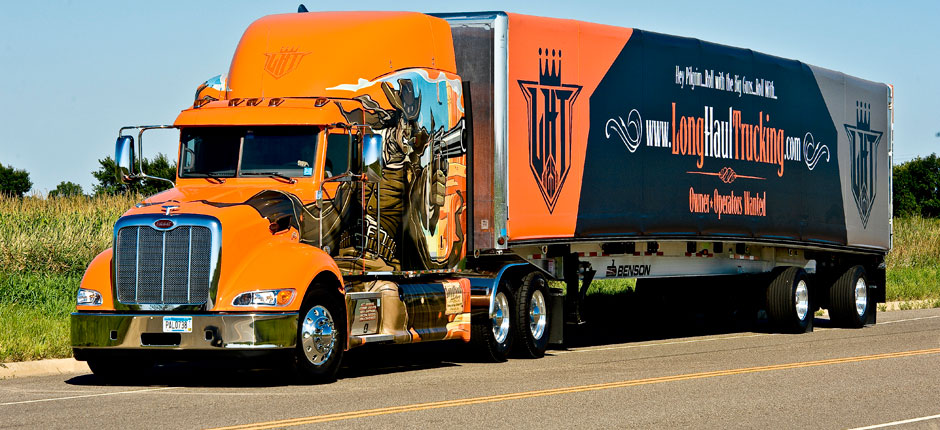The average American drives for 101 minutes a day. That’s 10% of waking life. Driving. Even our neighborhoods and cities are constructed around the needs of cars. Suburbia is the most obvious example, created in the 1950s as a direct result of the car.
Cars are so pervasive in America that it’s difficult to comprehend the full impact of eliminating driving. Here are a few predictions to get you started.
Travel will be different.

Road trips today are stressful. It’s the end of a long week, are you really going to hop in the car and drive 5 hours to your family? Or to go skiing in Tahoe? The fantasy of escape and the wide open road is alluring, but the reality is a long, droning, half-focused exhaustion on the interstate that feels a bit more like punishment.
But the first thing I’ll be doing with a self-driving car is a weekend road trip. Because it’ll be completely different.
Friday night we’ll snuggle up in the car, watch a movie, eat dinner, get a solid night’s sleep, and wake up at the Grand Canyon ready for a day of hiking. And instead of camping or staying at a hotel, we’ll sleep in the car as it drives us up to Park City for some Sunday skiing. Sunday night we’ll sleep in the car again on the way back to San Francisco, arriving in time for work on Monday morning. Here’s the itinerary, just waiting for the car!
The incredible simplicity of self-driven roadtrips will probably be the final straw in destroying regional airlines. “Last leg” regional flights have already become surprisingly expensive due to the high cost of jet fuel and reasonable expectations for pilot wages. When you can do the whole trip or even the last leg of your flight in the comfortable privacy of your own car, regional airlines are just toast.
But “your own car” may be a bit of a misnomer as well. The future of personal vehicles will probably look a lot more like Uber (a “fleet”) rather than individually owned cars. And, getting a bit more sci-fi… the operational efficiency of a fleet might improve revenue-per-vehicle enough to justify spending a lot more per vehicle. If we could squeeze 10x usage-per-vehicle out of operational fleet efficiency, then we could all be riding in $300,000 cars. That’s the initial price of Terrafugia’s flying cars.
We’ll travel more. Probably a lot more. But the market for short weekend flights will probably collapse, to be replaced by flying cars? Finally?
We won’t use roadside hotels. Sleeping while moving is way better. Resorts will do fine though.
Family operations will become simple.

British moms spend an average ~7 hours per week driving their kids around. To soccer practice. To a friend’s house. To summer camp. But with self-driving cars that disappears, even for families with lots of kids. The car can take care of it. And kids and parents will both love it, because it’s pure flexibility and freedom.
Female labor participation rates in the US have been dropping since 2000, but the sudden elimination of a whole class of mid-day driving chores could make it easier for child caretakers (almost entirely women in the US) to return to work.
For the kids, I know when I turned 16 and got my license it was a magnificent, freeing moment. With self-driving cars that moment won’t go away. In fact it’ll happen younger, because “getting a ride to Y” will just require permission, not a tired parent’s “sigh, no I already drove you to X today.” But how much younger? A five-year-old alone in a car seems unlikely? But by age 12 the kid is definitely fine by themselves. What kinds of permissioning will we need? Per-trip approval? The kid with full permissions is going to be popular indeed!
And don’t forget about grandpa and grandma. The moment when an elderly person loses their license can be devastating, humiliating and depressing. There are 8.4m elderly people who depend on others for rides, and 15.5m elderly who have no good public transportation options. Another 78 million boomers are on their way to driverless age as well. But with self-driving cars they’ll be free to roam.
Kids will have more freedom. Unique after-school programs could blossom.
Parents will drive less, freeing up tens of millions of hours in the US. More moms will probably return to work.
Grandma is on the road again. Getting older won’t mean being trapped in the old-people’s home.
There must be other demographics I’ve overlooked here too.
The trucking industry will be remade.

There are 3.5 million truck drivers in the US, or about 3.4% of the adult workforce. Self-driving trucks will eliminate almost all of those jobs… driving hazmat trucks may survive the longest. The unemployment will certainly sting in the short term as truck drivers look and train for new jobs.
But the secondary effects will also be interesting.
In the US there are, very roughly, 3 million hotel rooms rented per night. If you take ~1 million long-haul truck drivers off the road, roadside motels are going to see a significant hit, even if many of them have bunks in their trucks. Roadside fast-food restaurants and gas station delis will also take a hit.
Driving trucks is high pressure, stressful and demands long hours behind the wheel. So it’s not surprising that roughly 30% of drivers use illegal amphetamines. That means ~0.3m long-haul drivers are using amphetamines to stay focused and awake. Since there are 3m amphetamine users in the US, and about 0.3m amphetamine addicts, it’s possible that self-driving trucks could really take the wind out of the amphetamine market in the US.
Since long-haul truck drivers spend so much time away from home, it seemed possible that long-haul driving could be a significant source of demand for sex workers. There is an industry of prostitution at truck stops, but it turns out that the vast majority of prostitution clientele aren’t passing through, they’re local. Even though it’s not a significant part of the overall prostitution market, truck stops are known to be a particularly strong distribution network for drugs and STDs. So even though a small percentage of drivers are involved, eliminating drivers from long-haul trucking may slow the spread of AIDS and other STDs. But it could be more than offset by increases in personal travel.
On the political front, the Teamsters Union is one of biggest and most powerful unions in America, with most of it’s members working jobs in trucking, chaffeuring and delivery. In recent years the Teamsters have shifted their allegiance from the Republicans to the Democrats, and donate roughly $25m to campaigns each year. But the end of driving-related jobs will likely drain most of the Teamsters’ million-strong membership. And with members goes money and influence in the American political system.
Roadside fast-food joints and motels will dwindle.
The amphetamine market will shrink significantly.
The Teamsters Union will lose most of it’s power.
The effect on individual drivers in the trucking, chaffeuring and delivery industries will be painful to watch unfold. For better or worse it’ll be a fascinating study in economics, technology and job dynamics. I just hope we can build the education systems to handle millions of displaced drivers who’ll need training for new jobs.
But at a personal level I’m stoked for easier private travel and almost magical family transportation.
Still, it’s difficult to fully grasp what changes are coming… the end of drunk driving, good transportation for disabled folks, the loss of 750,000 bus driving jobs, automated fast food delivery, a complete overhaul of the USPS, the end of the DMV… I’ll stop now.